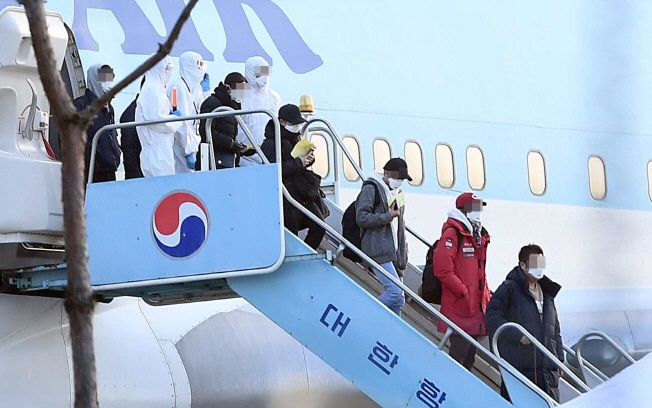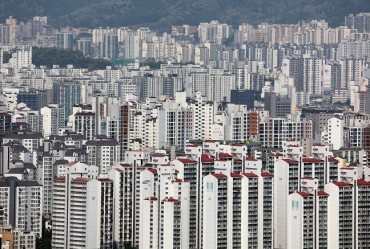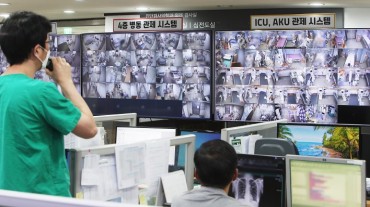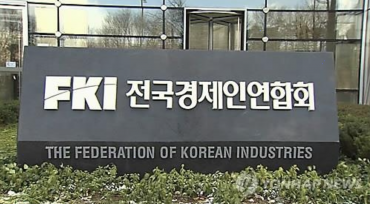
South Korean nationals evacuated from China’s Wuhan disembark from a chartered flight at Gimpo International Airport on Jan. 31, 2020. (Yonhap)
SEOUL, Jan. 31 (Korea Bizwire) — About 370 South Korean evacuees from the coronavirus-hit Chinese city of Wuhan headed in 36 police buses for two government-designated accommodations in central parts of the nation Friday after arriving at Gimpo International Airport in western Seoul in the morning.
The first batch of 368 South Korean residents of Wuhan, who landed in Gimpo aboard a chartered Korean Air plane, will be asked to stay at two government-run facilities — the National Human Resources Development Institute in Jincheon, North Chungcheong Province, and the Police Human Resources Development Institute in Asan, South Chungcheong Province — for the next 14 days.
The facility in Jincheon, about 90 kilometers southeast of Seoul, will house about 200 of them, with the rest to be admitted into Asan’s institute.
The plane carrying about half of some 720 South Koreans who applied for evacuation landed at Gimpo International Airport in western Seoul at about 8 a.m. South Korea wants to send another plane to bring the remaining citizens home.
A total of 369 people were supposed to board the plane, but one person was excluded at the last minute after being found to have a fever, according to a source.
Of those who arrived in Gimpo, 18 people showed signs of fever when they were put through additional health screenings at the airport, some of whom were taken to state-designated hospitals for further examination.
Evacuees with no symptoms are to be put into isolation for 14 days at two provincial public facilities.
Before boarding the Korean Air Boeing 747 plane at Wuhan Tianhe International Airport, the passengers went through rigorous quarantine checks that took longer than expected and caused a delay in their departure, a Seoul official said.
Final preparations were under way for housing the evacuees at the two facilities in Asan and Jincheon, amid tightened security against possible interruption by resident protesters.
After the government picked the two locations, residents there strongly protested the decision, arguing the designation came without their consent.
The protests grew more strident as South Korea reported its first case of human-to-human transmission on its soil Thursday.
With the arrivals of Wuhan evacuees imminent, meanwhile, resentment among the residents of Jincheon and Asan has shown some signs of abating.
The number of participants at the residents’ protest rallies had noticeably fallen Friday morning, with many angry banners at the entrance of the two state-run facilities and town streets removed.
Some residents have decided to ask authorities to step up quarantine measures.

Ambulances for South Korean nationals evacuated from Wuhan arrive at Gimpo International Airport in western Seoul, on Jan. 31, 2020 (Yonhap)
The total number of confirmed cases in the country stands at seven as of Friday morning.
Under an initial evacuation plan, South Korea was to send two flights each on Thursday and Friday. But after consultations with China, it changed the plan and sent only one flight Thursday.
Talks with Chinese authorities have been under way to arrange additional flights to bring back the rest of the citizens from the epicenter of the virus at night.
Wuhan, a city of 11 million people, has been under a lockdown aimed at blocking the spread of the virus.
Countries, including the United States and Japan, are scrambling to shuttle their citizens from the virus-stricken town. Russia has tightened its border with China.
Hours before their arrival, the World Health Organization declared the epidemic in China a public health emergency of international concern, a designation that would trigger more concerted global efforts to curb the spread of the virulent virus.
Since the novel coronavirus first emerged in Wuhan late last month, China has reported more than 9,690 confirmed cases and 210 deaths. The virus has spread to around 20 countries, including the U.S., Japan and Canada.
(Yonhap)






